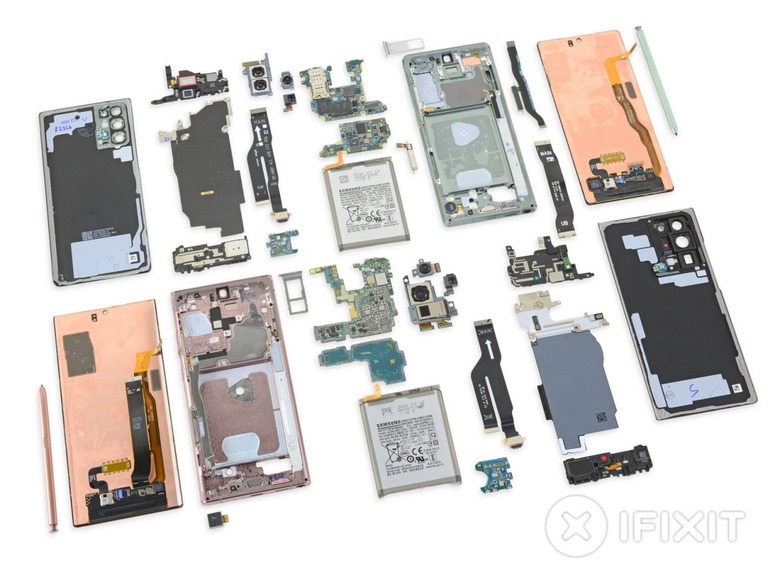Consumer Electronic Prices Have Gotten Out Of Hand
Apple just launched an expected but still surprising new product and, just like any other Apple product, it was priced beyond what most of its competitors would slap on. But even Apple's fans and customers were left scratching their heads at the AirPods Max's $549 price tag, wondering whether the company has finally lost it.Apple, however, isn't alone in this modern pricing scheme, and, believe it or not, there will no shortage of people grabbing these newer and more expensive products, regardless. Prices for electronics, especially smartphones, computers, and even their accessories, have really gone sky high, and consumers are simply accepting this new status quo with nary a question.
The Burden of Building
To be fair, manufacturing consumer electronics products, especially the likes of smartphones and even headphones, isn't a trivial endeavor. If it were, then almost everyone would be able to assemble their own phone, which actually remains a pipe dream for many technology enthusiasts and futurists. But until the day components can be easily bought off store shelves and devices assembled like LEGO, consumers will always be at the mercy of the Samsungs, Apples, Lenovos, and Microsofts of the world.
The price of a product is definitely a lot more than the sum of its parts. There is no shortage of sites and reports that indicate the so-called Bill of Materials or BoM, the total price of the components that go into something like a phone or smartwatch or laptop. It is no longer really that surprising to hear that the $1,200 Galaxy Note 20 has a BoM of around $549 and the $999 iPhone 12 Pro's components cost a total of around $593.

There are, of course, hidden costs when building products, from the actual assembly of the pieces to the logistics of retail. And then there's the more amorphous excuse of "R&D" that gets thrown around a lot. But one has to wonder at what point do all those comprise nearly half the price of a single device.
The Price of Progress
Unlike more trivial products, particularly those with electronic components, you aren't simply paying for parts and labor when you buy, say, a smartphone or Bluetooth headphones. You are, in fact, paying a whole ecosystem of industries that come together to build that product. And companies' favorite excuse? You're paying for the research and development that went into that product as well as the quality that is implicitly assured by its brand.
Unfortunately, these qualities are harder to quantify, which makes them perfect justifications for why a product costs almost twice as much as its build cost. It raises the question of how much does R&D really costs and if you should even impose that burden on consumers. And if there are industry standards and laws that require certain quality assurances, should you really be charged extra for what should be the basic qualities of a product?

That's not to say that there is no real R&D happening behind the scenes or that certain brands have better track records in QA than others. As components become more advanced, they often get more expensive until they become so common that it levels out eventually. And those components, too, have their own R&D costs that they drop on manufacturers who in turn drop them on buyers indirectly.
As the gap between manufacturing costs and retail prices get wider and wider each year, there has to come to a point when enough is too much. Unfortunately, we live in a culture and time where such behavior isn't just tolerated, it is also even encouraged.
The Cost of Convenience
It may unsettle and even offend some but it's hard to deny that we live in a capitalist and consumerist society, or at least most of the world's nations that drive the global market are. There is no company that isn't out to make a profit, even if just to keep the lights on, and people are raised to want the best that money can buy. Unfortunately, the way it works is that money is stretched to buy the best, not the other way around.
This, unfortunately, creates a vicious cycle where companies create and price products that feed the consumer mentality and presumption that price equals quality. There are always points in history where the market is shocked that something more affordable comes along that shatters that notion but eventually the market goes back to its usual rhythm. Even OnePlus was forced to admit it couldn't compete without raising its prices.
It is also a market and a culture that almost seem to punish consumers when they try to do the smart thing. As phone prices go higher, people tend to hold on to their phones longer. This, in turn, causes smartphone makers' profits to fall flat, forcing them to also raise their products' prices even higher to make up for lower sales numbers.

Wrap-up
It's is both unbelievable and also painful to watch prices of products go higher and higher, especially during a time when consumers' resources, primarily their money, are running thin. It is, however, equally unbelievable to observe people still buying the latest and greatest, sometimes without even a second thought about what they're investing in.
Progress comes at a price, of course, but doesn't always have to cost a fortune. That, unfortunately, is how the current market and culture works and even a pandemic wasn't enough to change it, only put it on hold for a while. The best we could do is to be smarter about the purchases we make and to educate each other about other options that are just as viable, even if not as famous.
